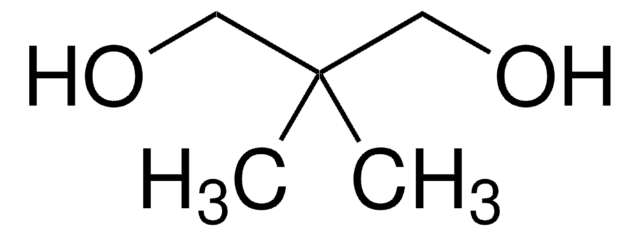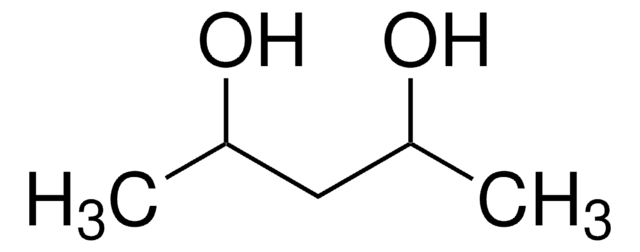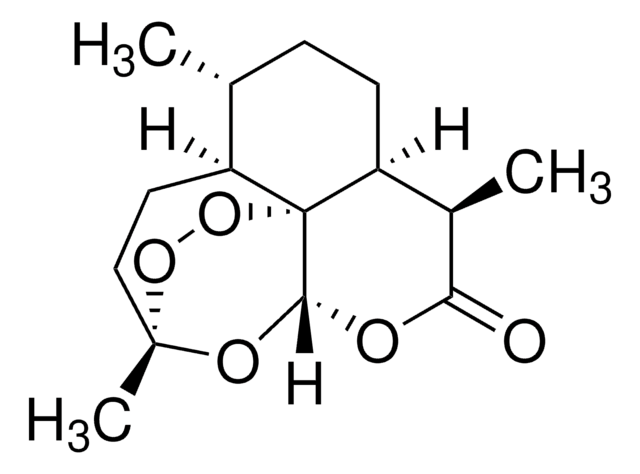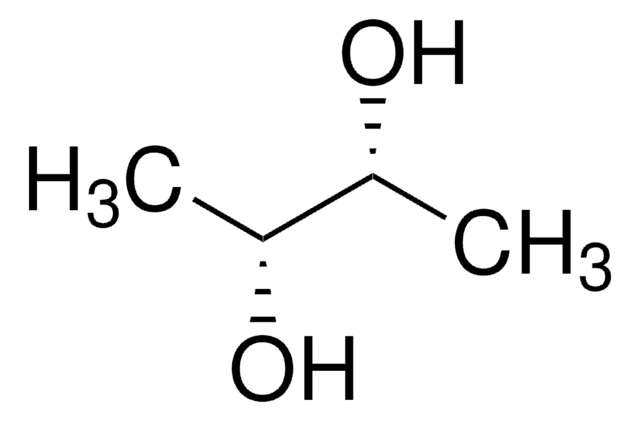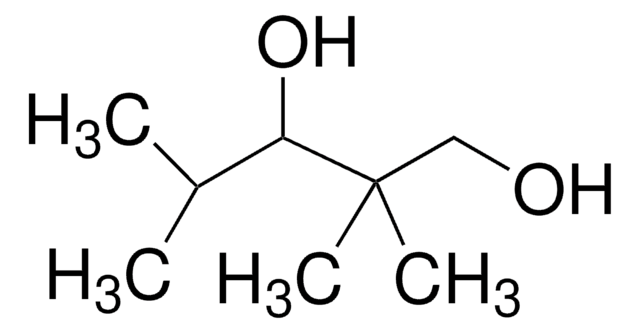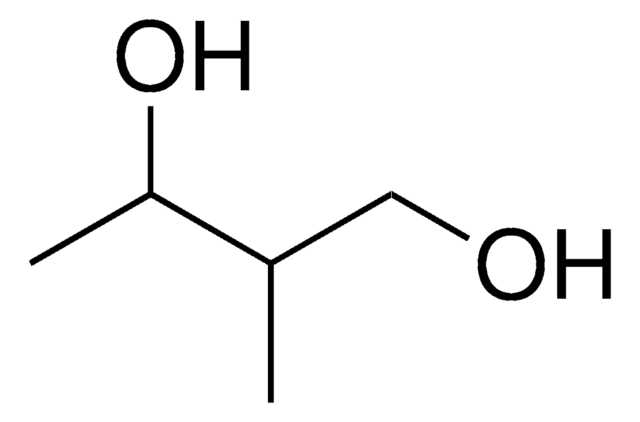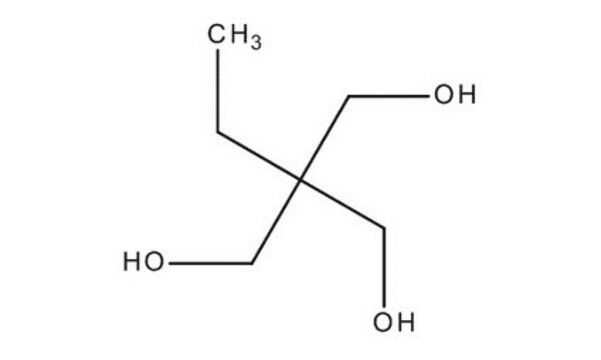Wichtige Dokumente
375721
2-Methyl-1,3-propanediol
99%
Synonym(e):
1,3-Dihydroxy-2-methylpropan, 2-Methylpropan-1,3-diol, Methylpropanediol
About This Item
Empfohlene Produkte
Dampfdichte
3.2 (vs air)
Qualitätsniveau
Assay
99%
Form
liquid
Brechungsindex
n20/D 1.445 (lit.)
bp
123-125 °C/20 mmHg (lit.)
mp (Schmelzpunkt)
−91 °C (lit.)
Dichte
1.015 g/mL at 25 °C (lit.)
SMILES String
CC(CO)CO
InChI
1S/C4H10O2/c1-4(2-5)3-6/h4-6H,2-3H2,1H3
InChIKey
QWGRWMMWNDWRQN-UHFFFAOYSA-N
Suchen Sie nach ähnlichen Produkten? Aufrufen Leitfaden zum Produktvergleich
Allgemeine Beschreibung
Anwendung
- Bei der Herstellung von festen Polymerelektrolyten für Lithium-Metall-Akkumulatoren.
- Zum Erhalten von Methylmethacrylat (Vorläufer für Polymethylmethacrylat-Glas) durch einen partiellen Oxidationsprozess.
- Bei der Synthese von biologisch abbaubarem thermoplastischem Elastomer mittels Kondensationsreaktion.
Lagerklassenschlüssel
10 - Combustible liquids
WGK
WGK 1
Flammpunkt (°F)
260.6 °F - closed cup
Flammpunkt (°C)
127 °C - closed cup
Persönliche Schutzausrüstung
Eyeshields, Gloves, multi-purpose combination respirator cartridge (US)
Hier finden Sie alle aktuellen Versionen:
Besitzen Sie dieses Produkt bereits?
In der Dokumentenbibliothek finden Sie die Dokumentation zu den Produkten, die Sie kürzlich erworben haben.
Kunden haben sich ebenfalls angesehen
Unser Team von Wissenschaftlern verfügt über Erfahrung in allen Forschungsbereichen einschließlich Life Science, Materialwissenschaften, chemischer Synthese, Chromatographie, Analytik und vielen mehr..
Setzen Sie sich mit dem technischen Dienst in Verbindung.